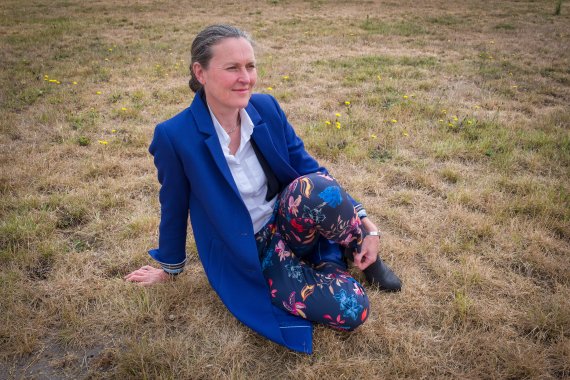The summer hasn’t even really got started yet, and the grass is already yellow and the ground hard and dry. The government is trying to manage the water scarcity in the short term with quick fixes such as a hosepipe ban. But a systematically different management approach is called for, says professor of Water Resource Management Petra Hellegers.
What are we doing wrong?
‘The water system is overly geared to coping with excess water and not enough to coping with water shortages. Current water management policy is based on an average year. But that average is no longer appropriate. Rainfall is extremely low, and this is the third dry year in a row. The extremes are becoming the norm, and we have not responded to that enough.’
Are we exhausting our water system?
‘No. Water is not scarce in the Netherlands. There are temporary shortages due to lack of precipitation. But we haven’t had a systematic lowering of the groundwater table in the last 20 years. This is not the Middle East.’
Where are the weak spots in the management system?
‘Water runs off too fast. We need to capture more water and keep it in the system. It is easier to adapt then. We are already doing it, and we are dealing with drought better now than in 2018. Sluice gates in the major rivers are being closed. The water level in ditches is being raised by installing extra sluice gates and closing culverts. People are investing in drainage based on water levels.’
So it’s easy to solve the drought problem?
‘I’m not saying it’s easy. There is considerable damage to agriculture and nature, especially in areas that water cannot be channelled to. And there are major interests at stake. Better management means all stakeholders being able to weigh things up wisely, and that is quite complex. Water distribution is what is called a “wicked problem”. But you can take steps.’
Nature conservationists say that the farmers are exhausting the water supply through excessive irrigation. We export our valuable water in the form of agricultural products, too. Do they have a point?
‘The biggest consumers of water in the Netherlands are not the farmers but industry and the drinking water companies. But farmers do use water just when nature needs it most. They use the most water to irrigate maize and grasslands. We do indeed export high-value crops, and with them, water. But the Netherlands is a net importer of water.’
We are dealing with drought better now than in 2018
Water is dirt cheap in the Netherlands. Could pricing be used to change the distribution?
‘Pricing can help to prevent waste, but is less suited to controlling demand. The water bill is just one small part of a household budget. Hardly anyone knows the price of a cubic metre of water. It is more important for us to realize the value of our water.’
Is a water footprint a good way of making producers aware of that value of water?‘That kind of footprint indicates how much water goes into making a product, but doesn’t tell you much about how sustainably it is used. People are trying to make that distinction, but it is difficult. What is more, I don’t think you should lay the responsibility for that at the consumer’s door.’
You just mentioned the value of water. What do you mean by that?
‘As an economist, I see scarcity as a question of distribution. For a fair distribution, it is important to know what functions water has, where and for whom, and what its importance is to society. The value placed on these things is political and should be made explicit, so that transparent, well-thought-out choices can be made.’
Water falls out of the sky. Isn’t it free?
‘Yes, that’s what makes it so tricky. And what’s more, the value of water fluctuates: it is not the same in summer as in winter. So assigning value is not a matter of a simple calculation. It is a process, in which we make choices collectively. Which functions do we prioritize? Which crops do we irrigate? Which crops do we grow, and where?’
That relates it to spatial planning.
‘And it is a spatial planning issue. The Netherlands is a small country, and a lot of different functions are found on that postage stamp. So can you serve all those different functions when water is scarce? Should you combine harvesting drinking water with irrigation in the same area? That is not a happy marriage if there is consistently less rain. We shall have to make choices. Our water management system will have to be recalibrated now that extremes are becoming normal. Otherwise you get stuck in a pattern of ad hoc policy and irrigation bans.’

 Photo: Guy Ackermans
Photo: Guy Ackermans